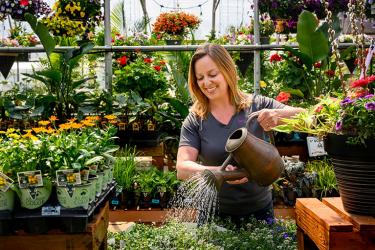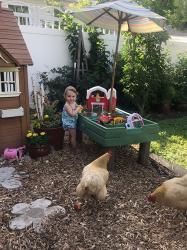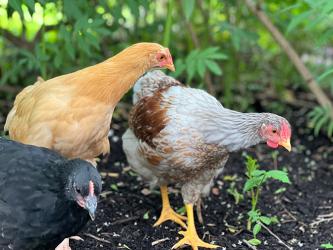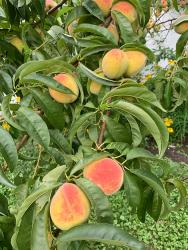Embracing French Style: A potager garden is a French style of ornamental food gardening that beautifully blends function, flavor and art into a landscape. It can also be simply called a kitchen garden. Flowers should draw in pollinators, and other companion plants can increase the resiliency and rigor. Veggies, fruits and herbs are intertwined together, working as a plant community to help make each other more productive and useful.
Incorporating Practices: Consider incorporating some beautiful new pots into the landscape and fill them with a combination of flowers, veggies and herbs. It’s always best to place these pots as close to the kitchen or patio as possible. Start learning about what types of flowers are edible, like pansies and nasturtiums. Also consider what types of fun cocktails you enjoy in the summer and grow the ingredients like mint, basil and lemon verbena.
Becoming a Budding Herbalist: It’s best to start with growing in pots. Be sure that the pots have good drainage and use a good quality potting mix. Planting doesn’t start and end in the spring, it starts in early spring with cool season crops, continues into late spring with warm season crops, then back to cool season crops again in late summer/early fall. With some planning in place, cool season crops can be protected and the harvest season can continue well into the winter.
Pollinator Haven: A perfect potager garden will draw in pollinators and other beneficial insects and birds with flowers and berries, but keep in mind that you’ll be sharing your blueberries with the robin if you don’t have a plan to protect them. Ideally, in a very productive garden, there could likely be enough to share with everyone. These types of gardens are usually in enclosed spaces where large animals, like deer, do not have access.
Perfect Companions: Certain plants are best planted together, while others should be kept apart. For example, basil is very beneficial to plant near tomatoes because it seems to help repel certain pests and some say can help enhance the vigor and flavor of the tomatoes. Carrots are also known to do well when grown with tomatoes. There are lots of great companion planting charts online to use as a guide when deciding how to design an edible garden.
A Quick Maintenance Tip: The most important maintenance requirement is to be prepared for the neighborhood rabbits and squirrels to be curious about what has been planted. There are some effective repellents that are derived from hot pepper wax or simply sprinkle some cayenne pepper around new plantings to help deter the pests, although barrier methods (fencing and cloches) are most effective. It’s also important to understand that high production gardens aren’t low maintenance… the more you give, the more you get back.
Go Ornamental: When choosing materials for a potager garden, consider using as many natural materials as possible: real stone edging, cedar wood obelisks, terra cotta pots and metal crafted trellising are preferred over plastic or vinyl. These materials are enduring and timeless and create the feel of an Old-World garden. Of course, this is a very personal space, so there are no rules when it comes to doing what brings you joy.
Know Your Goals: A fun goal to have with a potager garden is to try to incorporate at least one small thing from the garden into a meal (or cocktail) every day. Whether this be eggs from a chicken coop, flowers from a redbud tree, foraged wild violet flowers or canned veggies from the last season’s harvest, with some planning and a lot of passion, we could all be eating like kings in our “Potager du Roi.”















